
In this second part of the article, I would like to present two examples of plumbing schemes for the beginner reefer-plumber. Both of these ideas are based on my own (as well as other hobbyists’) setups and require little to no previous plumbing experience. They can be expanded and modified to each individual hobbyist’s needs. Once you learn how to build a basic PVC grid, other, more sophisticated systems will be much easier to plan out.
In case you missed the first part, here it is:
http://reefs.com/blog/2013/02/18/aquarium-plumbing-guide-part-i-basics-of-pvctubing/
Before I step into explaining each of the two plumbing ideas, I would like to mention one particular part of the grid- the overflow drain section. If not planned correctly, it tends to create a lot of noise and be inefficient for the flow needs through the sump. The simplest way to drain water from the display aquarium to the sump is to install a vertical piece of pipe coming from the bulkhead to the top of the overflow; it’ll work to a degree, but the noise of water gurgling inside the pipe is so annoying it can ruin the “calming effect” of a home reef environment. The noise comes from air trapped in pipes and as with any plumbing project, a fish tank drain needs a vent to release that air. There are many ways to overcome this problem, but the Durso drain is a proven design that works on almost every aquarium.
The Durso drain is a “T” shaped piece of plumbing with an airline tubing-sized hole on the top. What this device does is it drains water through the “C” section down the pipe while letting the air escape through the hole on top (see drawing). The whole purpose is to silence water going down to the sump and prevent air clogging (which presents as a gurgling sound from the drain). A Durso pipe is quite easy to make from readily available PVC fittings. Here’s a list of parts needed to put it together (size depends on your drain pipe diameter, obviously). See the picture below for reference:
a) straight piece of PVC pipe running down the overflow
b) one “T” shaped fitting
c) two short pieces of pipe, extending from two ends of “T” fitting (or one if you buy an inside cap, as in my case)
d) PVC cap
e) one 90° elbow
f) bulkhead coupling, to attach the vertical piece of Durso pipe to the bulkhead, check your overflow bulkhead size and connector to determine correct fitting
g) (optional) PVC strainer, can be purchased online, strainers can have SLIP or THREAD connectors, choose elbow piece accordingly
h) short piece of aquarium airline tubing
To put the Durso pipe together, just follow the illustration above. I suggest not using PVC cement where the straight piece of pipe connects to the bulkhead adapter, in case the Durso pipe needs to be cleaned or in situations where you need to flush out a fish who jumped into the overflow section and cannot be removed any other way (just make sure it sits firmly in the connector coupling). One word of advice: make sure your sump can handle extra volume from the overflow before flushing it.
1. Basic plumbing build with overflow containing both drain and return pipes
Below is my suggestion for most simple, fully functional plumbing grid build for a fish tank . It’s designed for systems where no additional equipment (media reactors, external refugiums, etc.) will be fed from the return pipe. When you are certain you won’t expand your plumbing and you just want to create proper flow through the sump, this scheme is for you.
Let’s start with the drain section, from the point where the bottom side of the bulkhead connects to the drain pipe:
a) first, determine the kind and size of the bulkhead and fittings needed to connect it to the PVC pipe
b) with a combination of 90° elbows or using flexible PVC pipe, create a section that goes straight down to the center of the filter sock holder
c) the use of a union type swing valve in the drain pipe does two important things:
– shuts the water down, allowing for removal of the Durso pipe without draining the overflow
– allows for quick removal of the bottom section of drain to change the filter sock (see point “d”)
d) this part consists of a straight piece of pipe extending from the union valve to the filter sock and a 90° or 45° elbow on the other end; the elbow lessens the splashing water sound and reduces the amount of air bubbles entering the system; when changing the filter sock, simply unscrew the bottom nut from the union valve and remove the filter sock with PVC pipe piece
The return section in this example is equally simple and from the return pump’s outlet it consists of:
a) a connector fitting from the pump’s head to the PVC piping; usually a male or female THREAD x SLIP type; check with your pump’s specs
b) a relief manifold with valve- when the pump’s gph ratio is higher than your overflow’s ability to drain water, we need to reduce the flow; there is incorrect advice out there to install a swing valve right after the pump’s outlet and partially close it to lessen gph- not only does this shorten the return pump’s life by forcing it to operate at higher pressure and therefore radiate more heat into the surrounding water, but it’s a waste of energy; the use of a relief valve allows us to reduce the flow by directing some of it back to the sump, creating more chaotic flow patterns in the refugium section; in addition to that, we can always modify this branch to accommodate a media reactor fed by the return pump; the relief valve manifold consists of a “T” SLIP x SLIP fitting, a swing or gate valve ( if swing valve is used, buy THREAD type to easily remove it at a later time, if needed), and a series of PVC pipe pieces and elbows to direct the flow where you want to
c) this section extends from the “T” manifold to the bottom part of the display tank’s bulkhead and incorporates a swing valve; this valve is not used to reduce the flow, but to stop it completely after shutting down the return pump- an overflow section of return line can be removed without draining the overflow
d) the last part is the bulkhead-to-PVC pipe fitting, a straight piece of pipe and 90° elbow extending from the overflow box to the tank; I am a fan of using a loc-line return where you can direct the outlet to your liking, so I used a THREAD x SLIP 90° elbow and male THREAD x loc-line reduction fitting;
This is a simple, working plumbing grid for your basic flow needs with a little bit of expandability included. However, if you plan to run more than just a display tank-sump loop through your return pump, I encourage you to try the advanced plumbing scenario.
2. Plumbing build with two return pump – fed media reactors and dual outlets.
My second scheme for a plumbing build is essentially a basic, display tank-sump flow scenario expanded to accommodate media reactors and other equipment. The drain section of this build is identical to the basic plumbing scenario explained above, please refer to it when installing your own drain piping. In situations where two or more overflows are present, simply copy the same scheme multiple times, directing the drain outlet to one or more filter socks.
The return half of this build consist of (beginning on the return pump’s outlet):
a) a relief valve manifold, which is explained in details in point “b” of the basic plumbing scenario above; this branch can be further expanded and transformed to accommodate additional equipment, such as an inline UV sterilizer, diatom filter, external refugium, and more
b) a media reactor manifold- (look at the picture below for reference )
– feeding media reactors through the return pump help saves energy and space of additional pumps in the sump; it consists of:
-a “T” coupling and 90° elbow (if needed) directing some of the flow to the reactors
-a gate valve for flow adjustment through the media reactors; gate valves, though more expensive, allow for precise flow adjustment; as I mentioned before, make sure to close the valve and open it all the way once a month to prevent calcium buildup that can destroy the rubber seal inside the gate; also important is to choose a THREAD type of valve so it can be reused in future projects
-a THREAD x BARB reduction fitting to connect flexible tubing to the reactor’s inlet, this part is where flexible tubing is more convenient- most commercially available reactors use barb connectors, and tubing allows for easy maintenance; run the outlet tubing all the way to the filter sock, attaching it to your PVC pipes with zip ties; the filter sock will trap any particles that may escape from the media reactor; always use quality, non-transparent tubing and secure ends to the barb connector using nylon or stainless steel hose clamps
In my example, the display tank has dual outlets, so the part right after the media reactor manifold splits into two equal lines using a “T” coupling, the drawing above shows a side view of the display aquarium’s back wall- a 90° elbow (or two 45° elbows if you have enough space and prefer gentle slopes) connects the “T” coupling with straight PVC pipe, which in turn connects to the bulkhead using another 90° elbow with adapter. It’s important to make those pipes as close to the tank as possible, which is why I used a readily available MPT x slip elbow; in-tank side of the outlet consist of MPT x LOC-LINE coupling with 6″ of loc-line and round or wide spout.
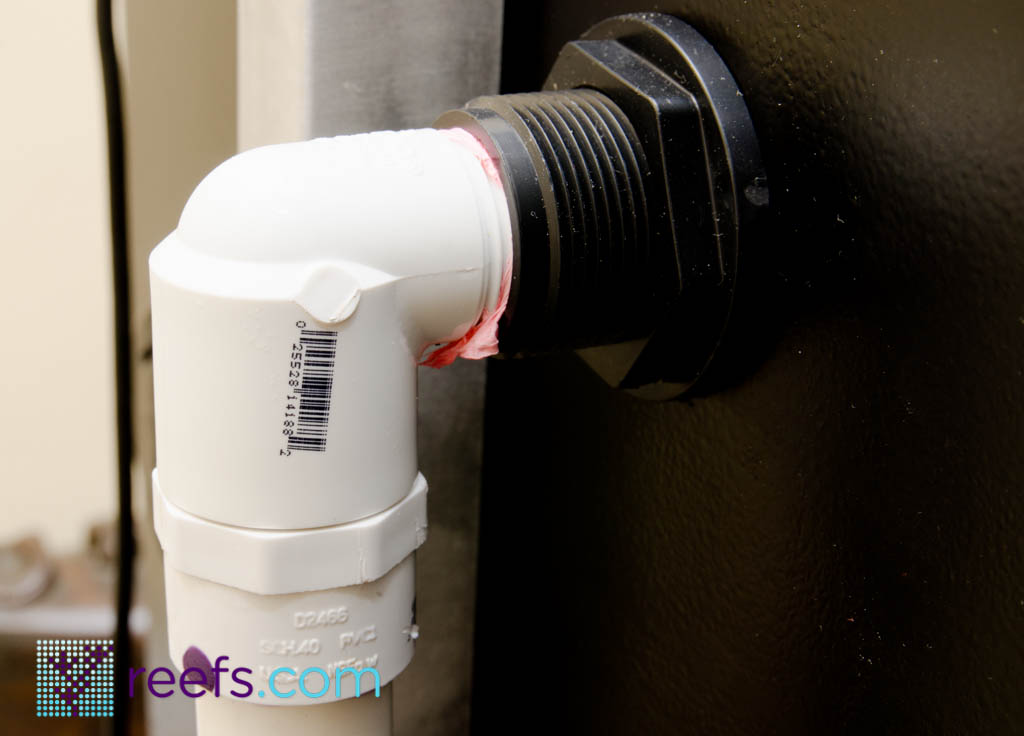
This is an all-in-one plumbing scheme that is easy to put together and works flawlessly. Please carefully read both parts of the Aquarium PVC Plumbing Guide and enjoy building your own closed systems. Don’t hesitate to contact me with any questions and comments you may have.
You are welcome to print and use the above drawings for reference, just right-click on the image and click “Save Picture As”
All images by author

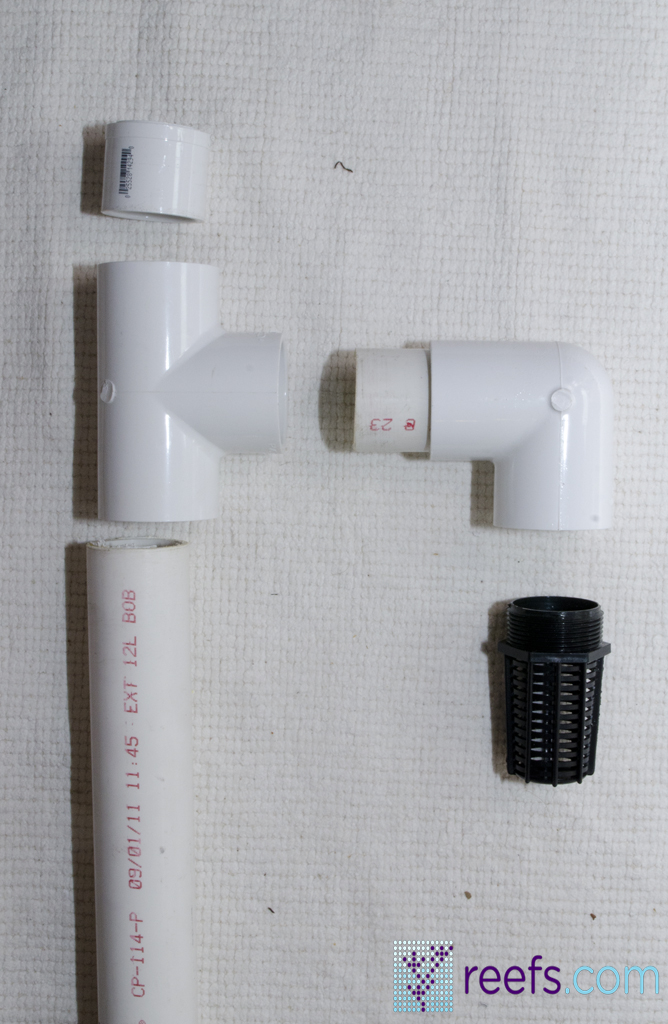
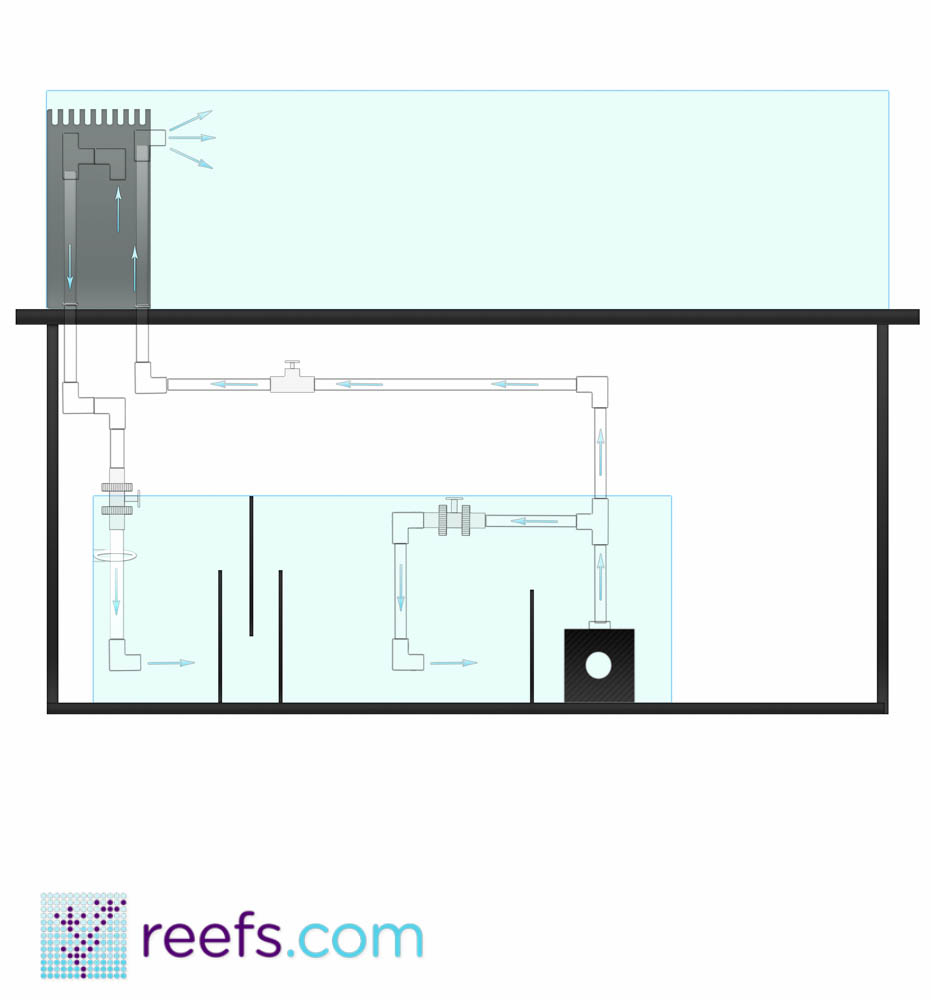
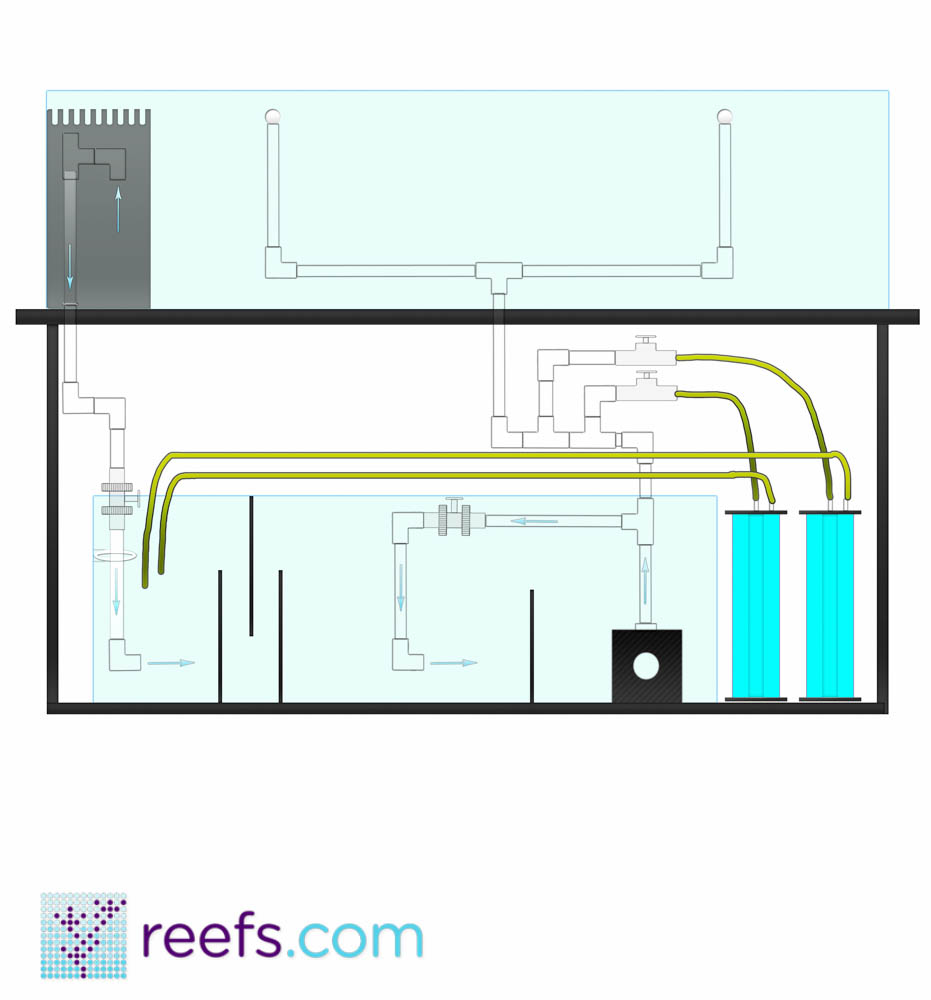
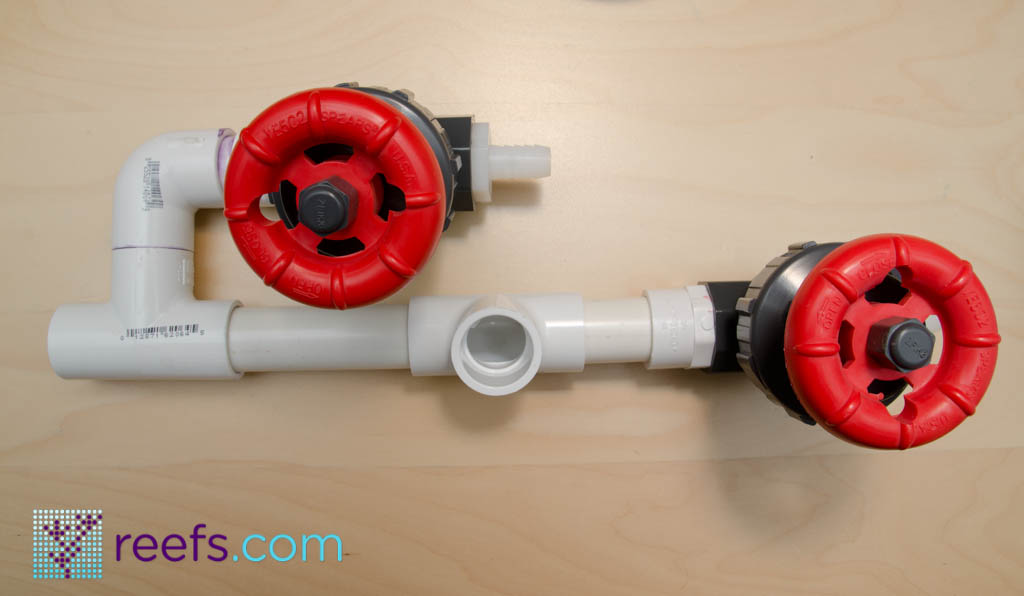

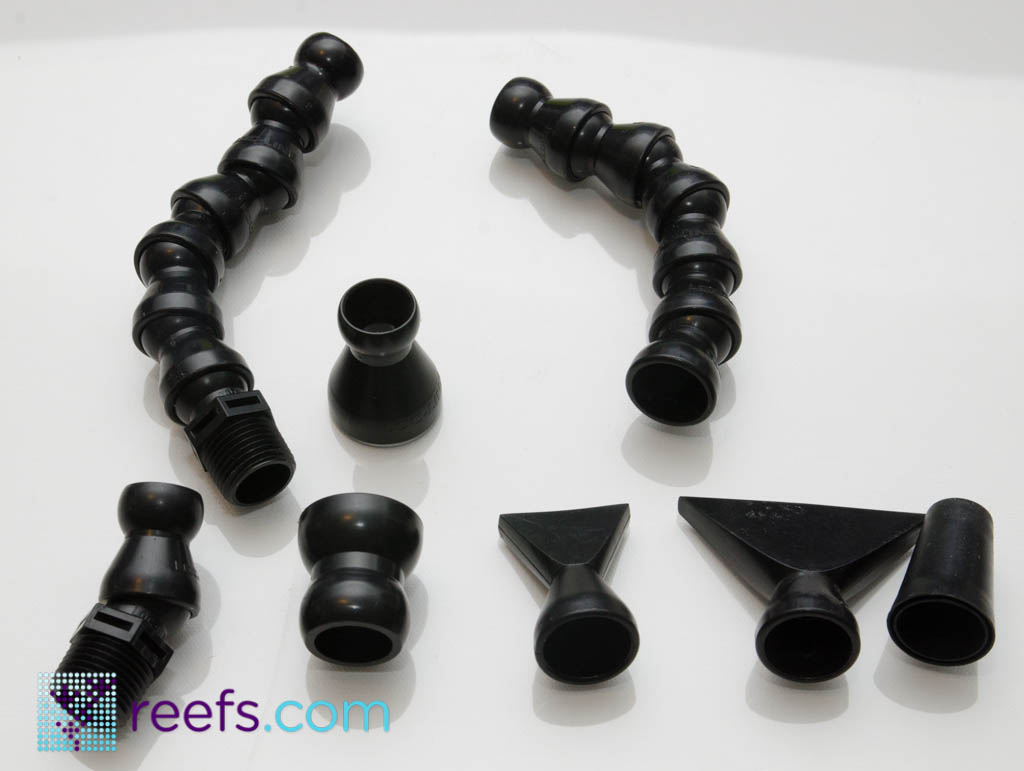








Marcin, thanks for a great article. As I in the early stages of planing for a 93 Cube, this was very helpful.
I’m glad you like it, hope the second half help people with their plumbing ideas.
I am not a fan of the valve on the drain. If you would ever forget to open it after doing maintanence you would overflow the tank when the return pump is powered up. This might be remedied by adding an additional hole to the bottom of the tank and plumbing it with an open stand pipe to return water and prevent the flood.
Hi Marcin, thank you for sharing the blue prints for aquarium automation. Quick question, what did you learn regarding of the placement of clean water discharge. I’m wondering whether one could have it on the floor of a bare tank to whip up debris for drain system. No one seems to do it, so I wondered why. Back pressure seems the obvious answer but one could install a check valve to solve for that problem.